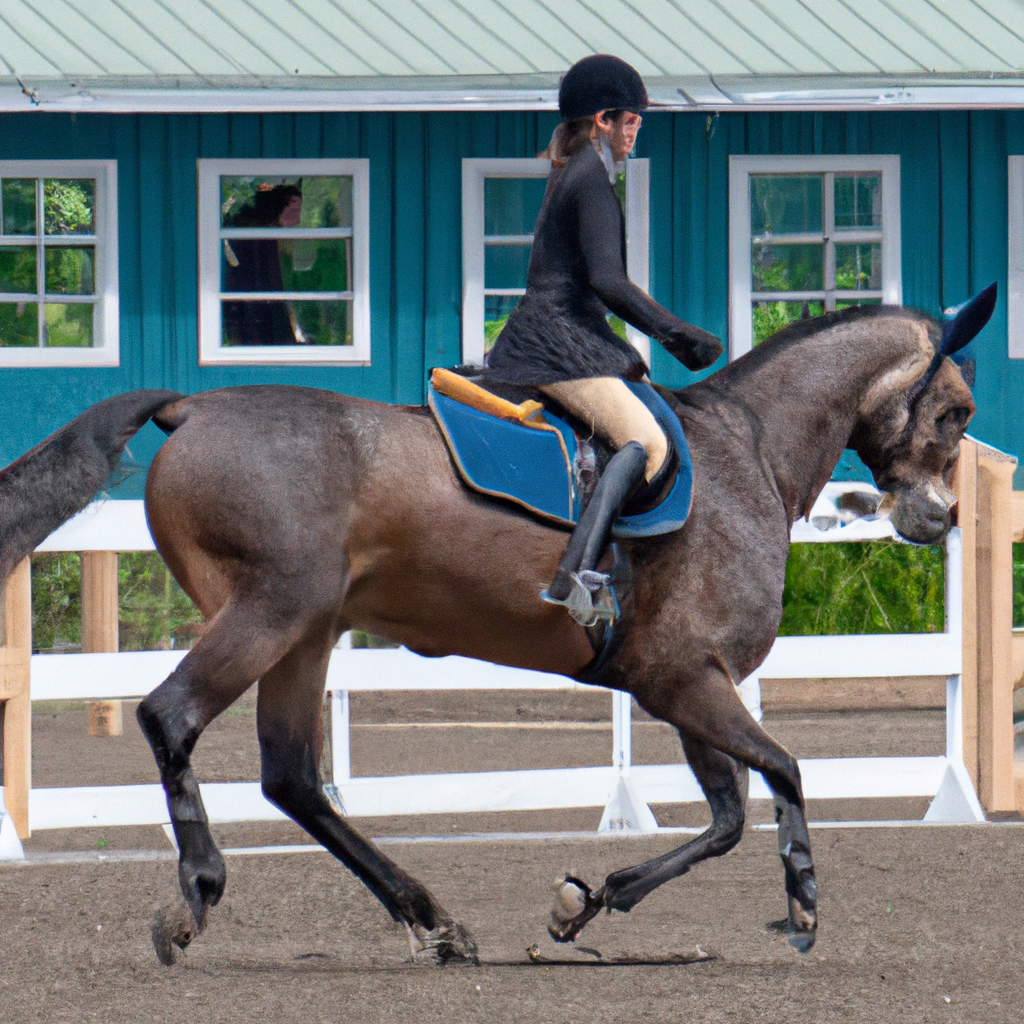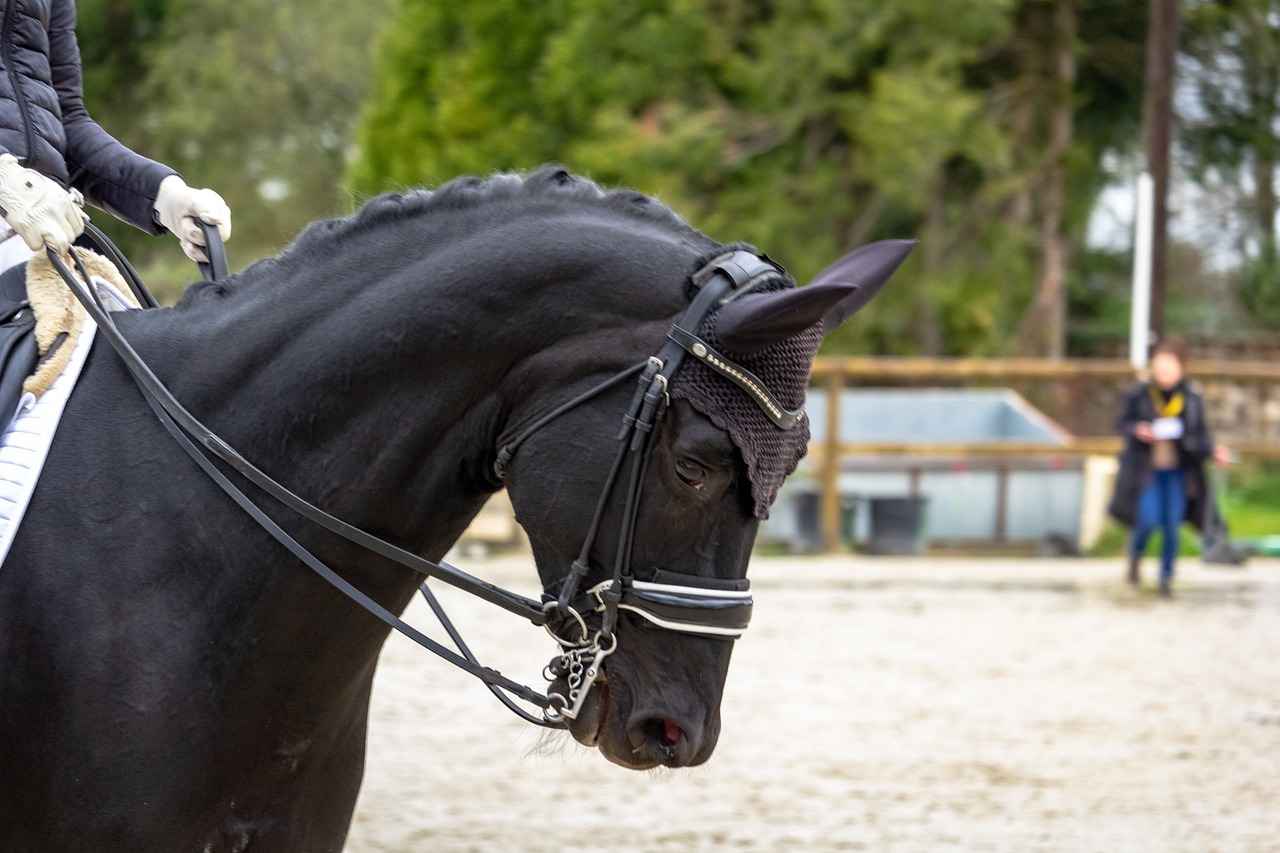Imagine yourself mounting a horse, your heart pounding with anticipation. You find your footing at a walk and soon, you’re comfortable trotting in the ring while maintaining rhythm – all as an advanced beginner. Aside from the excitement, your main challenge is to master one of the basic skills in the art of horseback riding, which is balance. Unlike what most people presume, riders stay on the mount not by gripping the horse with their legs or by tugging on the reins like life saviors. Rather, it’s about maintaining balance, keeping your center of gravity directly over that of the horse. This piece, “mastering balance in Competitive Dressage,” takes you on a journey of discovering and mastering this art, preparing you to take the next step, to canter into the world of competitive dressage.
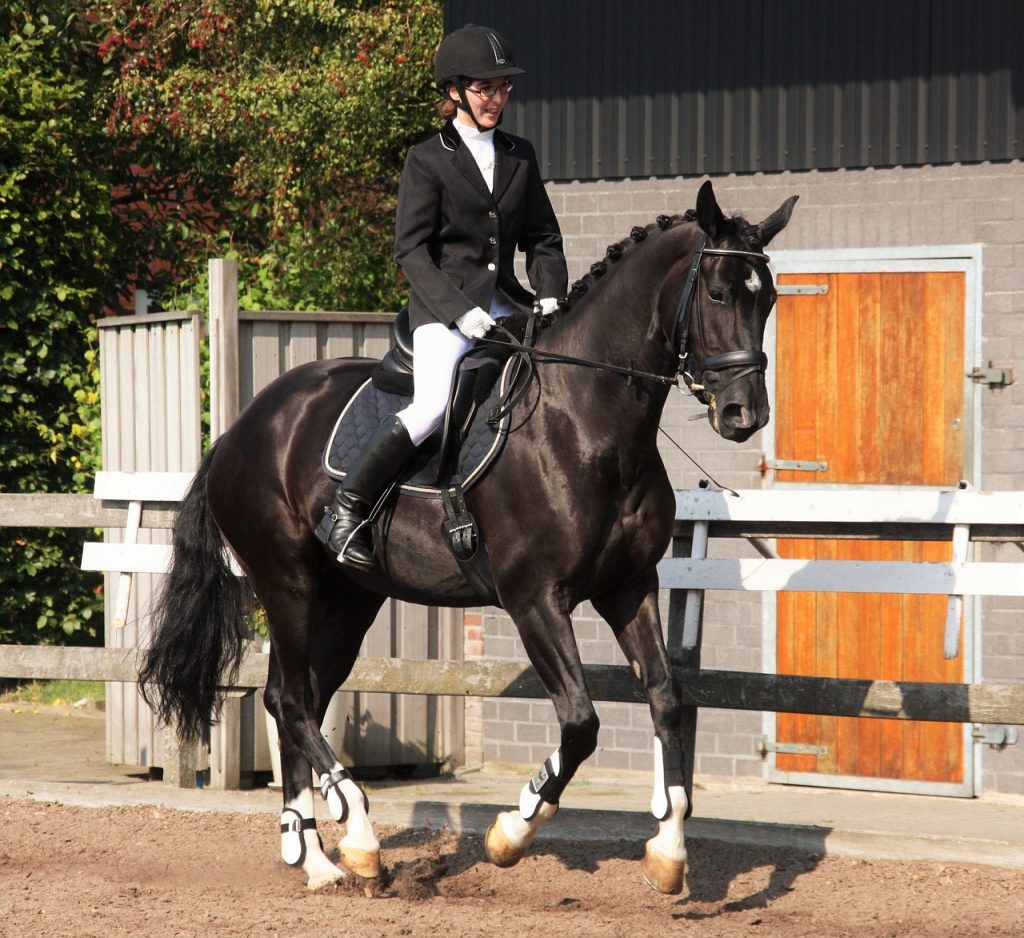
This image is property of pixabay.com.
Understanding the Concept of Balance
In the world of horseback riding, balance is a fundamental concept that you must master if you desire to excel in this field. It’s the secret to achieving absolute harmony with your horse as it forms the basis of your communication with the animal. To put it simply, balance is about helping your horse move freely and efficiently while maintaining a steady upright position. This stability allows you to interact more intimately with your horse, enabling both of you to perform optimally.
The Importance of Balance in Dressage
Dressage isn’t just about showing off the skilful moves of your horse. More than that, it’s a graceful dance between a rider and a horse, one that depends heavily on a deep understanding of balance. When the balance between you and your horse is maintained, it gives freedom of movement to your horse and allows you to control and guide your horse more effectively. Indeed, balance is at the heart of dressage and without it, the performance may fall flat.
The Relationship between Rider and Horse Balance
The equilibrium between a rider and a horse isn’t separate; it’s intertwined. You cannot hope to maintain your balance while the horse is unbalanced, or vice versa. When you lean too far in any direction, it shifts the horse’s balance as well, prompting it to adjust its stance. The same goes for the horse—if it abruptly changes its gait, it may throw you off balance.
Balance versus Gripping
There’s a noteworthy distinction to acknowledge here. To maintain balance, it’s crucial not to resort to grip the horse with your legs or rigidly hang on to the reins. Not only can gripping interfere with your horse’s movement, but it also isn’t a reliable method of maintaining balance in the first place. Balance comes from your posture, your core stability, and your relationship with the horse—not from a vice-like grip.
Mastering Rider Balance
mastering your balance as a rider is a learning journey that necessitates patience and commitment. It is an integral part of your progression in dressage and lays the groundwork for more advanced exercises and techniques.
Principles of Effective Rider Position
An effective riding position is vital to maintain balance. Your body alignment, from your head down to your heels, should be perpendicular to the ground. Your torso should remain straight and your pelvis neutral, while your legs hang relaxed at the horse’s sides. Keeping your shoulders relaxed and aligned with your hips will help ensure your center of gravity stays directly over that of the horse, thus maintaining balance.
Exercises for Improving Rider Balance
There are numerous exercises that can help you improve your riding balance. Practising transitions, circling, doing serpentines and half-halts, or changing your riding position from full seat to light seat or two-point are all effective ways of improving your balance. Remember, the key is to keep your center of gravity aligned with the horse’s.
Importance of Core Strength in Rider Balance
Your core strength plays a critical role in maintaining balance. A strong core supports your upper body, helps keep your alignment right, and allows you to stay steady despite the horse’s movements. Regular exercises to strengthen your core, such as pilates or yoga, can greatly enhance your riding balance.
Mastering Horse Balance
While mastering your balance is essential, it’s only half of the equation in dressage. Understanding and helping your horse achieve its balance is equally important.
Understanding Horse Biomechanics
Getting a grip on horse biomechanics is crucial for improving your horse’s balance. You must understand that horses naturally carry more weight on their forehand, and part of your job in dressage is to redistribute this weight so it’s more evenly balanced between the front and rear. This requires a solid understanding of how your horse’s body works and how to influence it.
Training Techniques for Improving Horse Balance
Training techniques for enhancing your horse’s balance could include transitions between gaits, numerous exercises like shoulder-ins, haunches-in, and leg yields. When done properly, these exercises not only strengthen your horse’s muscles but also increase its understanding of weight distribution, ultimately improving balance.
Recognizing Signs of Balance and Imbalance in the Horse
Comprehending the signs of equilibrium and disequilibrium in your horse can save you time and effort. A balanced horse moves smoothly and efficiently, showing no resistance to your aids, whereas an unbalanced one will likely show signs of hard pulls, stiffness, or apparent laziness. Identifying these signs helps you know when to push your horse harder or when to scale back.
The Role of Gaits in Balance
Each gait, be it walk, trot, or canter, plays a key role in maintaining balance and can help enhance the skill, understanding the subtleties of each is crucial to developing balance.
Walk: The Foundation of Dressage Balance
The walk is the core foundation of dressage balance. It is the most basic gait, and practicing balance in the walk forms the groundwork for balance in further gaits. It offers the opportunity to master control, precision, and the correct rider position at a slower, more manageable pace.
Trot: Developing Balance for Movement
The trot is the next step up from the walk and calls for more balance due to its bouncy nature. It’s a two-beat gait that can be utilised to develop both your and your horse’s balance as it requires coordination and a continuous change of diagonals.
Canter: Maintaining Balance at Higher Speeds
The canter, being a faster gait, demands that you and your horse maintain balance at a higher speed. Mastering the canter means you can sustain balance even when the pace increases. It provides the ideal exercise to master weight placement and the subtle shifting of weight required as your horse moves.
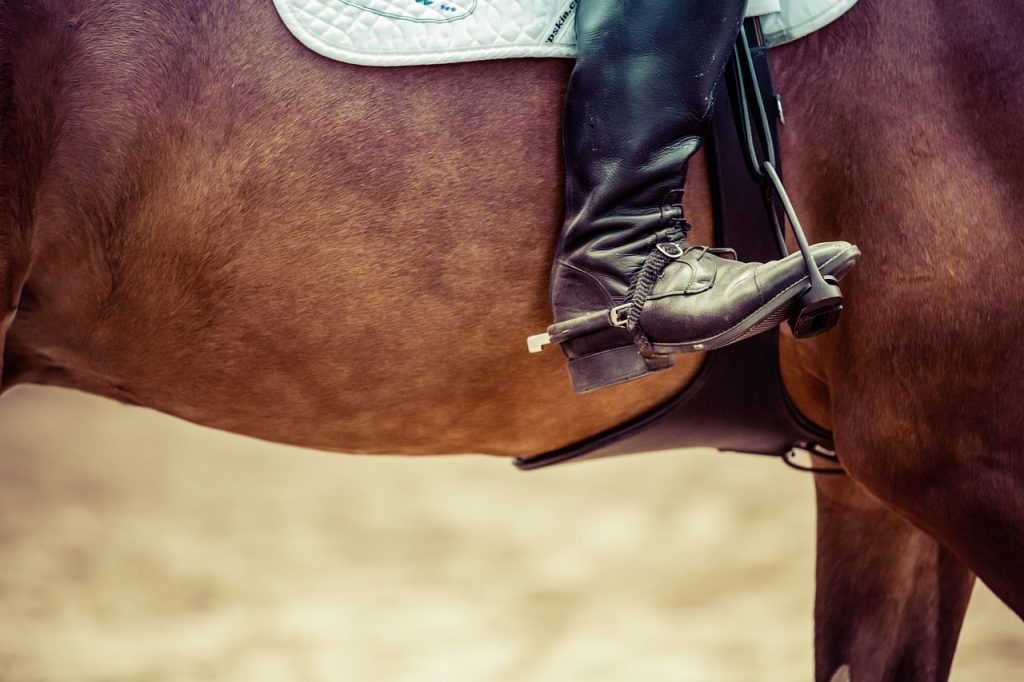
This image is property of pixabay.com.
Balance in Competitive Dressage
Balance isn’t just an important skill for riding; it also plays a significant role in competitive dressage. In dressage contests, balance is one of the key aspects evaluated by judges.
The Importance of Balance for Dressage Scoring
In competitions, balance can make or break your score. Judges closely observe the rider’s balance and posture as well as the horse’s various movements. They look for a picture of harmony between horse and rider, and balancing is crucial to creating that picture.
Common Balance Mistakes in Dressage Competitions
Common mistakes related to balance in competitions may include leaning too far forward, gripping the horse too much, or failing to maintain a straight line from shoulder, hip, to heel. These mistakes can throw off the balance and lead to lower scores from the judges.
Tips for Maintaining Balance During Dressage Tests
Some techniques for maintaining balance during competitions include staying relaxed, focusing on your body’s alignment and posture, maintaining a consistent rhythm, and relying on your core stability rather than gripping onto the horse. Even as you focus on these, remember that practice is the most effective way to enhance your balance.
Incorporating Balance in Dressage Training
Your dressage training sessions should involve plenty of exercises and techniques aimed at improving balance. Balance is a skill, and like all skills, it must be honed over time with practice.
Strategies for Improving Balance in Dressage Practice
There are numerous strategies you can adopt to improve your balance during dressage practice. These could include performing different exercises at each gait, using various riding positions, and regularly practising transitions. You can also use your training time to work on your core strength, as a strong core is a cornerstone of good balance.
Drills and Exercises for Balance Training
You could do various drills and exercises to enhance your balance. Drills like ‘sitting trot without stirrups’ and ‘cantering in light seat’ can be very effective. Other exercises like ‘riding in a two-point position’ or ‘performing transitions on a circle’ can also help.
The Role of Consistency in Training for Balance
Consistency is key in training for balance. It’s not enough to do balance exercises sporadically—you need to consistently incorporate them into your riding routine. Over time, consistency can help you build muscle memory, which makes maintaining balance a second nature to you.
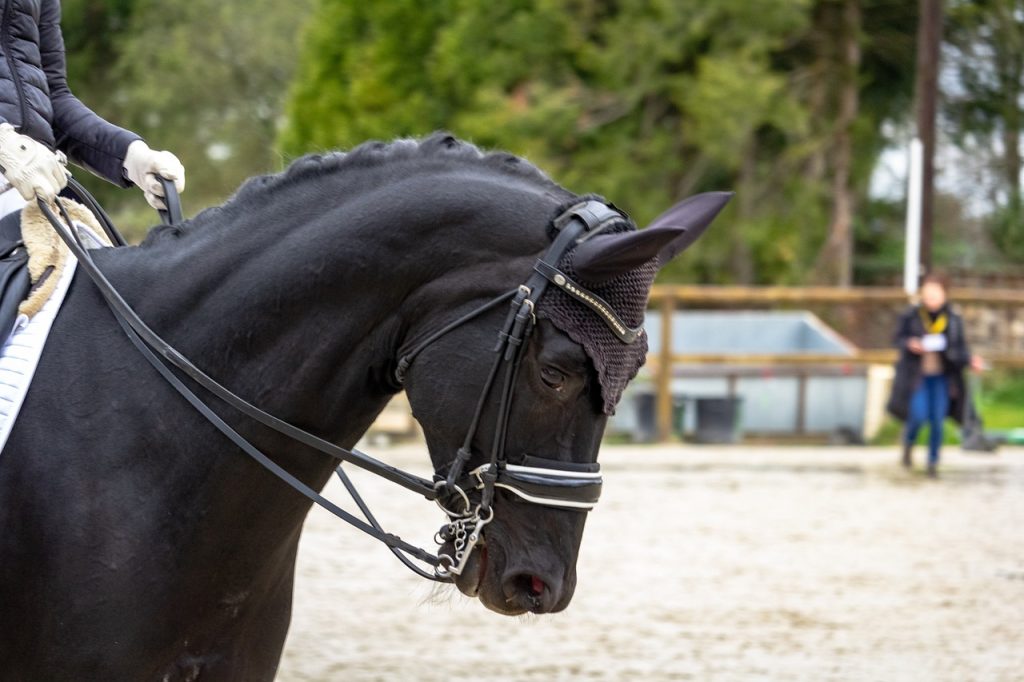
This image is property of pixabay.com.
The Role of Tack and Equipment in Balance
The right tack and equipment can significantly aid your attempts at maintaining balance. Choosing and using them correctly is a vital part of the balance equation.
Choosing the Right Saddle for Balance
The right saddle for your horse’s physique and for your own comfort can significantly influence balance. You should choose a saddle that fits both you and your horse well – neither too tight, nor too loose – and that allows for natural movements.
How Bits and Bridles Affect Balance
Bits and bridles can majorly affect the balance of both horse and rider. The right bit can enhance communication between horse and rider, making controls more precise and balance easier to maintain. For bridles, a properly fitted one can affect the way a horse carries its head, which directly impacts balance.
The Importance of Properly Fitted Equipment
All tack and equipment should be properly fitted not just for comfort, but also to maintain balance. Ill-fitted equipment can cause discomfort to the horse, leading to behaviors that can disrupt balance like head tossing or balky movements.
Challenges In Achieving Balance
Achieving balance in dressage riding is not without its challenges. However, identifying these issues early on and addressing them can make the journey easier.
Common Problems and Their Solutions
Common balance issues in dressage can range from gripping onto the horse too hard, leaning too far forward or back, to failing to adjust your balance in response to the horse’s movements. These problems can be overcome with continuous training, guidance from a skilled instructor, and patience.
Dealing with Rider Imbalances
All riders have some imbalances, but it’s crucial to identify and deal with them effectively. Imbalances in your strength or flexibility can lead to issues with your riding balance. Regular exercise, especially strength training and stretching, can help address these imbalances.
Addressing Horse Imbalances
Horses, like riders, have their imbalances too. Recognizing and addressing these imbalances can be key to improving their balance. Conditioning exercises and consistent training can help address a horse’s physical imbalances, while patience and understanding can solve behavioral ones.
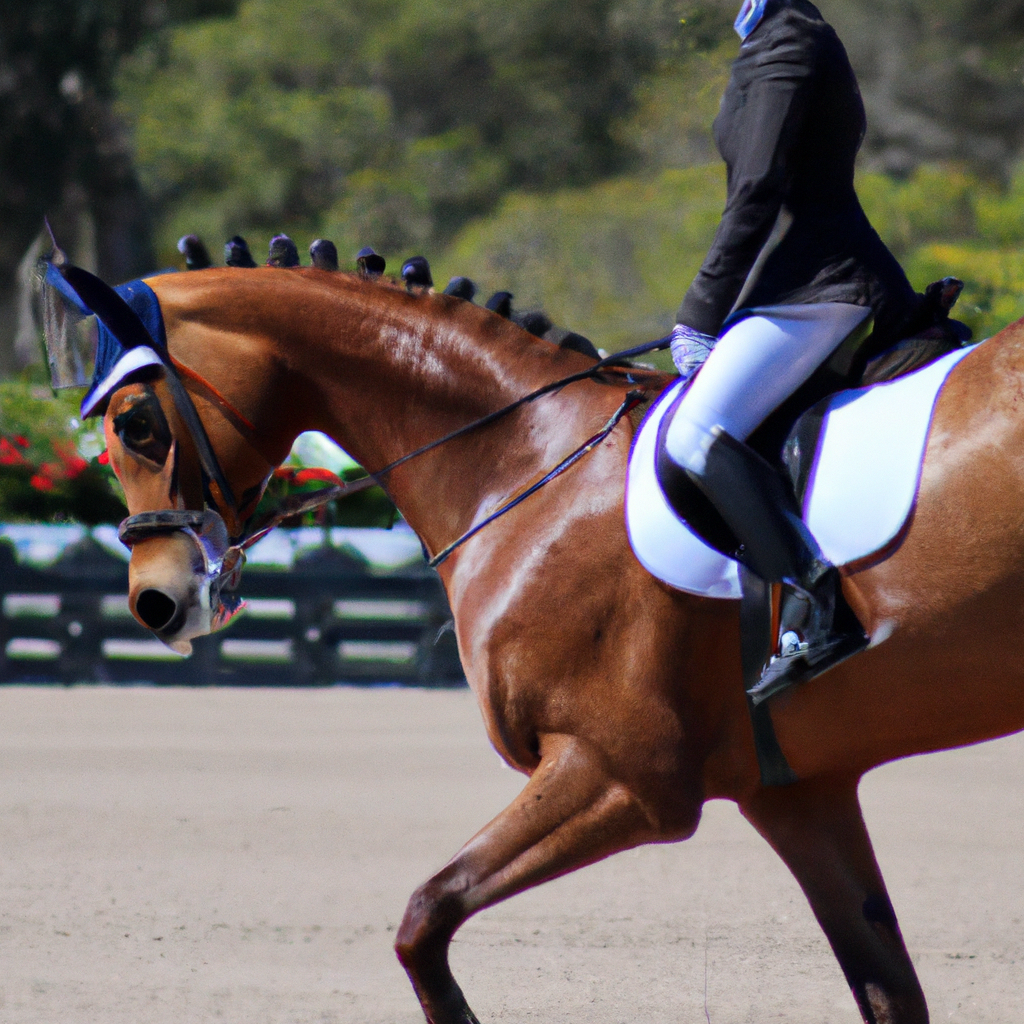
The Role of A Dressage Coach In Enhancing Balance
In the journey to achieving balance, a good dressage coach can be a trusted guide and mentor who can accelerate your learning process.
Understanding the Role of a Coach
A coach’s role in dressage is multifaceted. They provide instruction and guidance, assist with technique, and can even help rectify horse behavior. Their extensive experience and knowledge can prove invaluable in helping you achieve and maintain good balance.
The Benefit of Professional Guidance
Professional guidance can often provide the quick feedback and correction you need to improve your balance rapidly. A professional dressage instructor can identify any balance issues you or your horse may have, suggest corrections, and teach techniques to enhance balance that might otherwise take a long time to learn on your own.
Finding the Right Coach for Dressage Balance Training
Finding the right dressage coach is crucial. Look for someone experienced, patient, and knowledgeable in the intricacies of balance in dressage. A good coach will ensure that you and your horse train at a comfortable pace, setting achievable targets to keep you motivated.
Maintaining Balance During Dressage Competitions
Maintaining balance during competitions is crucial for a successful performance. Here are some strategies and reminders to keep in mind to excel at the competitive level.
Precision and Harmony: Keys to Competition Balance
Creating a picture of precision and harmony is a goal in competitive dressage, and balance is key to achieving it. It facilitates fluid and elegant movements, creating an impression of you and your horse moving as one. Accurate riding and effective communication add to this picture by letting your horse accurately hit the required movement marks.
Managing Nerves to Retain Balance
Competition nerves can easily throw off balance. Developing techniques to manage nerves like deep breathing, visualization, or having a simple warm-up routine can greatly help retain your balance when it counts the most.
Strategies for Successful Competitive Dressage Performance
Focus on your posture and alignment, keep breathing, ride accurately and precisely, and trust in your training. Remember that while competitions can be high pressure, at the end of the day, they’re a testament to your hard work and dedication to mastering the beautiful art of dressage.
In conclusion, mastering balance in dressage requires patience, effort, knowledge, and consistent training. But once achieved, it will allow you and your horse to form a deeper bond and move in harmony in a beautiful dance of dressage.
